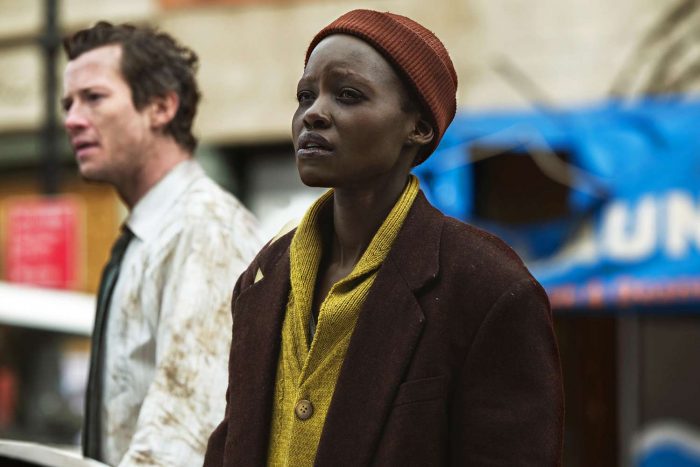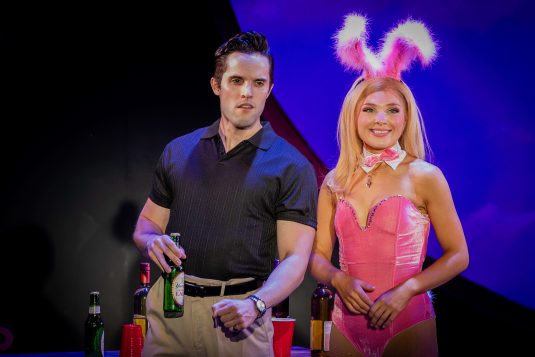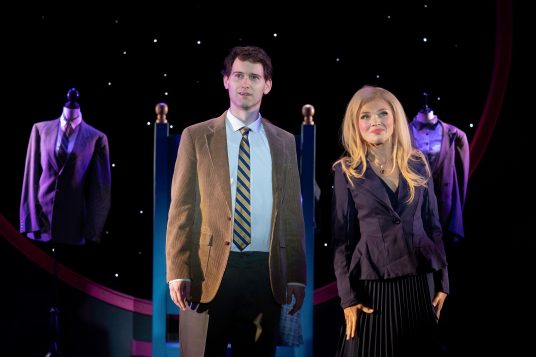By Daniel Dunaief
Paula S. Apsell wants to correct one of the more insidious myths about Jews during the Holocaust.

The award-winning filmmaker is showing the documentary Resistance – They Fought Back at the Cinema Arts Centre in Huntington on July 25, offering numerous examples of Jews who fought against the murderous Nazi regime.
The film from Apsell, who will be at the Cinema Arts Centre screening to speak with the audience, chronicles resistance in many forms, from getting married in secret, to having children, to holding concerts, to caring for the poor, to smuggling food and weapons into ghettos and, ultimately, to guerilla combat.
These stories of courage and a readiness to fight back when any form of resistance could mean severe punishment or death not just for the person rebelling but for many others paint a completely different picture than the one in which Jews surrendered meekly to their fate.
“There were seven rebellions in death camps, and six of them were led by Jews,” said Apsell, who won numerous awards as executive producer for PBS NOVA films. “They still mustered the courage to rebel knowing they would die in the rebellion” and almost all of them did.
The survival rate among Jews in general and those who the Germans found were rebelling, which includes many in their late teens and early 20’s who were fighting to protect and defend their families, was low.
While she was an executive producer at PBS for the Nova science series in 2016, Apsell traveled to Lithuania near Vilnius, where she produced a documentary for PBS about Jews who were brought to a site to burn the bodies of thousands of other Jews whom the Nazis had murdered.
At night with shackles on, they used spoons to dig a tunnel over the course of 76 days. When they escaped, they filed off their shackles and raced towards a forest, with 11 of them surviving through the rest of the war.
Building on this story, Apsell, who worked with Lone Wolf Media and co-directed the documentary with Kirk Wolfinger, started gathering information for the Resistance film in 2019 and completed editing the movie in September of 2023.
Apsell, who herself is conservative about what she shares with her eight and 11-year old grandchildren, suggested the documentary is appropriate for juniors in high school or older, unless they have had some level of education about the Holocaust.
Compelling lives
Amid the many stories of courage and sacrifice, Apsell felt a particular connection with Bela Hazan.
A courier who brought information, money and weapons to the ghettos, Hazan posed as a Polish Christian woman and traveled along dangerous roads surrounded by Nazis who would imprison, torture or kill her if they knew of her work.
After Hazan survived the dangers of the war, her son Yoel Yaari, who hadn’t heard of his mother’s wartime activities, found two notebooks containing details about her work.
Yaari, who is the Henri and Erna Leif Professor for Research in Neurodegenerative Diseases at the Hebrew University Faculty of Medicine in Jerusalem, has told people through articles and his book “Portrait of a Woman” about his mother’s “astounding courage and what she had done for the Jewish people,” said Apsell. “We can all learn about courage in adversity.”
Apsell suggested that scholars knew about the way Jews had resisted, but that lay audiences often say they thought Jews went to their death as sheep to the slaughter.
Other ways to watch the film
Apsell is in the final stages of putting together a broadcast deal, which she hopes will be ready in January to coincide with Holocaust Remembrance Day, which is on January 27.
She also plans to work with organizations that have relationships with schools and libraries so students can access the information.
These stories “ought to be a much more visible part of the history of the Holocaust,” she said.
“I had a mission to tell these stories,” Apsell said. “I felt like it was a personal commitment and a responsibility” to share these stories.
While Apsell appreciates and acknowledges that people who weren’t Jewish helped their Jewish friends, neighbors and even strangers, she felt like the focus on resistance has often been on outside help.
“In this film, my emphasis was on Jews rescuing other Jews,” she said.
The film includes interviews with five Jewish survivors who were among the resistance fighters. Resistance also uses considerable archival footage from organizations that had recorded interviews. The film’s narrators include actors Corey Stoll, Dianna Agron and Maggie Siff.
Dr. Jud Newborn, lecturer, author and curator at the Cinema Arts Centre, had an immediate reaction when he viewed the film.
“I was stunned,” said Newborn, who is an expert on Jewish anti-Nazi resistance and served as the founding historian of New York’s Museum of Jewish Heritage. “No documentary covers the panoply of Jewish resistance in its many forms and in such a moving as well as revelatory manner.”
Newborn, who will host a discussion with Apsell right after the screening, added that he thought this was a “groundbreaking film.”
While Newborn describes all manner of Jewish resistance in his multimedia lecture programs, he learned new stories because the movie pulls together “the most cutting edge information,” he said. “The subject of Jewish resistance breaks stereotypes and is deeply inspiring and energizing and it’s also deeply moving because they had to overcome obstacles unlike any people under Nazi occupation or indirect rule.”
————————————————–
The Cinema Arts Centre, 423 Park Ave., Huntington will screen Resistance – They Fought Back on Thursday, July 25 at 7:15 p.m. with filmmaker Paula S. Apsell in person followed by discussion with moderator Dr. Jud Newborn. Tickets are $18 per person in advance at www.cinemaartscentre.org


































